Exploring the vast and diverse continent of South America is an adventure that promises an array of breathtaking landscapes, rich cultures, and unique experiences. Yet, beyond the well-trodden paths of iconic places like Machu Picchu or Rio de Janeiro lies a hidden world of remote spots in South America waiting to be discovered.
These off-the-beaten-path locations offer intrepid travelers a chance to disconnect from the bustling cities and popular tourist destinations, immersing themselves in the pristine beauty and solitude of some of the most secluded corners of the continent.
In this article, we embark on a journey to uncover the most remote spots in South America, where nature reigns supreme, and the spirit of adventure thrives.
From the remote wilderness of Patagonia to the untouched jungles of Guyana, we will traverse the landscapes less traveled, shedding light on the unparalleled allure of South America’s hidden gems, but keeping safety in mind.
Picture this: You’re standing at the edge of the world, surrounded by lush, vibrant greenery that stretches as far as the eye can see. Exotic birds sing in the canopy above, and the distant roar of the Amazon River fills the air. Welcome to the Amazon Rainforest, the first stop on our journey to explore the most remote spots in South America.
1. The Amazon Rainforest, Brazil
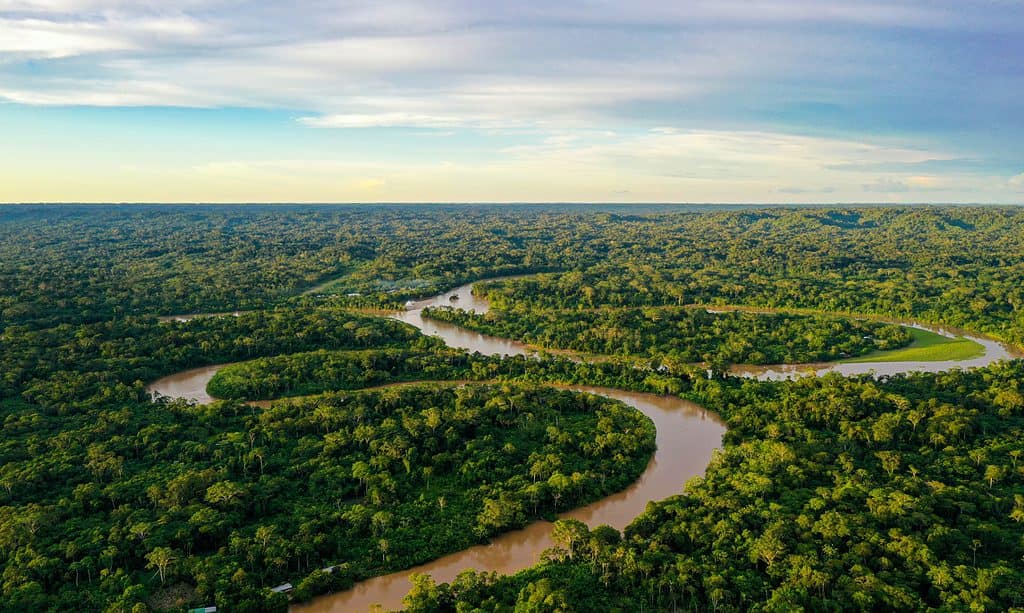
The Amazon Rainforest is the largest tropical rainforest in the world.
©iStock.com/JarnoVerdonk
What Makes it Special: The Amazon Rainforest is the epitome of untamed wilderness, spanning over 5.5 million square kilometers. It’s the largest tropical rainforest globally, boasting unparalleled biodiversity. Here, the Amazon River, the second-longest in the world, winds its way through dense jungle, creating an atmosphere of unparalleled allure.
Why Do People Want to Go There: The allure of the Amazon Rainforest lies in its mystique and untouched beauty. Nature lovers, photographers, and those who want to connect with the wild will find it to be a dream destination.
What Can People Do While There: Explore lush jungle trails, spot rare wildlife, embark on river cruises, and connect with indigenous communities. Adventure-seekers can go zip-lining through the canopy.
The Culture of the Region: The Amazon is home to diverse Indigenous cultures, each with its unique traditions and lifestyles. Visitors can engage in cultural exchanges and learn about ancient customs in many of the remote spots.
What Can People See: Witness astonishing biodiversity, including jaguars, macaws, pink river dolphins, and vibrant plant life. Visit remote villages and learn about traditional Amazonian practices.
Safety Rating: Generally safe with guided tours. But, beware of wildlife and potential health risks like malaria and yellow fever. Stick with reputable tour operators.
How to Get There: Fly into Manaus, Brazil, and embark on guided tours that will take you deep into the heart of this jungle paradise.
Next, let’s hop over to Easter Island, a place shrouded in mystery and intrigue.
2. Easter Island, Chile
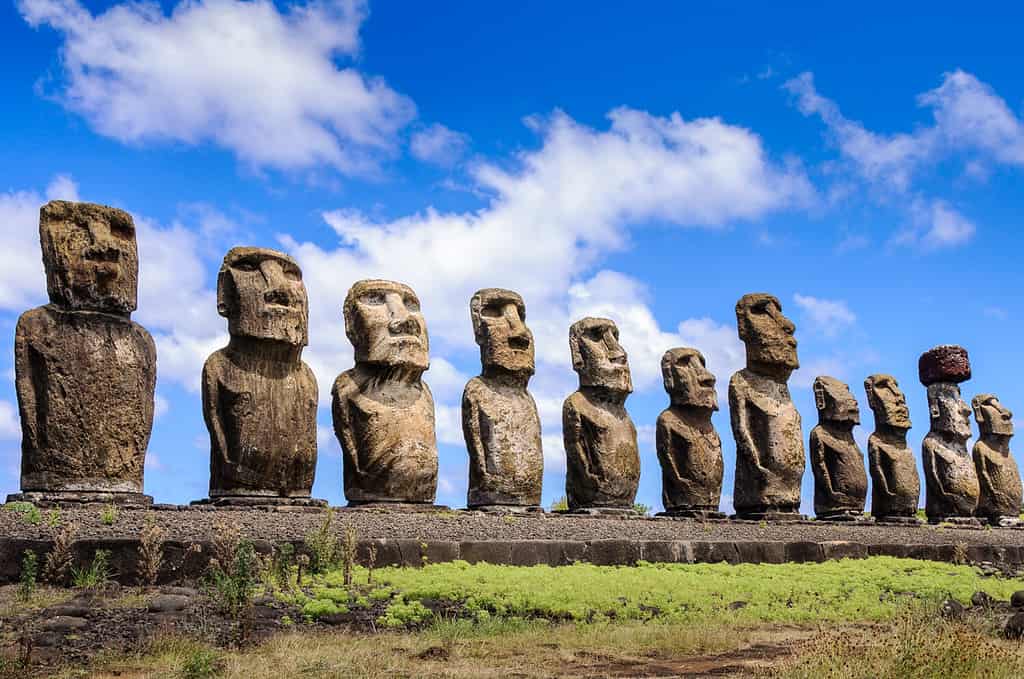
The sculptures at Moais of Ahu Tongariki stand guard on Easter island, Chile.
©Alberto Loyo/Shutterstock.com
What Makes it Special: Easter Island, or Rapa Nui, is a remote volcanic island in the South Pacific Ocean, known for its iconic Moai statues. These enigmatic Moai statues, carved centuries ago by the Rapa Nui people, make this island truly unique. Its isolation in the vast ocean adds an aura of mystique to this already captivating destination.
Why Do People Want to Go There: Travelers are drawn to Easter Island to unlock the secrets of its ancient past. The Moai statues, with their enigmatic expressions and colossal size, inspire awe and wonder.
What Can People Do While There: Explore archaeological sites, marvel at the statues, hike to volcanic craters, and soak in pristine beaches. Snorkeling and diving are also popular activities.
The Culture of the Region: The Rapa Nui people have a rich cultural heritage, expressed through their art, music, and traditional dances. Visitors can witness and participate in cultural events.
What Can People See: Besides the iconic Moai, the island is home to stunning volcanic landscapes, pristine beaches, and vibrant marine life.
Safety Rating: Generally safe for tourists, but take precautions against petty theft. Respect the local culture and archaeological sites.
How to Get There: Fly from Santiago, Chile, or Tahiti, as only one airline, LATAM, operates regular flights to Easter Island.
Now, let’s venture into the vast wetlands of South America for out next remote spot.
3. The Pantanal, Brazil

The Pantanal is the world’s largest tropical wetland and home to diverse wildlife such as the caiman lizard.
©Patrick Rolands/Shutterstock.com
What Makes it Special: The Pantanal, the world’s largest tropical wetland, stretches across Brazil, Bolivia, and Paraguay. It’s home to diverse wildlife, including capybaras, caimans, and giant otters. For birdwatchers, this place is a paradise, boasting over 650 bird species.
Why Do People Want to Go There: Wildlife enthusiasts and nature lovers are drawn to the Pantanal for its unparalleled opportunities to see exotic animals in their natural habitat. It’s a photographer’s dream.
What Can People Do While There: Go on wildlife safaris, birdwatching tours, and boat trips through serene wetlands. Fishing and horseback riding are also popular activities.
The Culture of the Region: The Pantanal is influenced by the traditions of cowboys (gauchos) who manage vast cattle ranches. Visitors can experience their way of life and savor traditional cuisine.
What Can People See: Spot jaguars, capybaras, giant otters, and a breathtaking array of bird species, including toucans and macaws.
Safety Rating: Generally safe, but beware of caimans and other wildlife. Malaria and dengue fever are potential health risks, so take precautions.
How to Get There: Fly to Cuiabá, Brazil, and arrange guided tours with local operators for unforgettable wildlife safaris.
Now, let’s journey into the heart of the Peruvian Amazon.
4. Iquitos, Peru
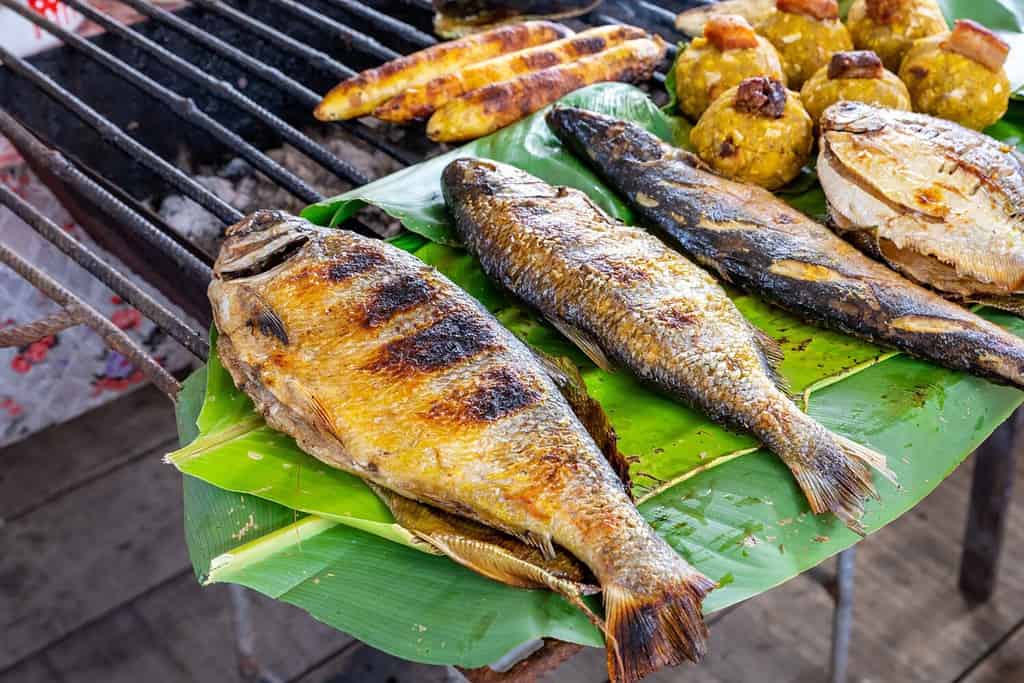
Visitors to Iquitos can sample local cuisine such as Suri larvae and grilled Amazonian fish.
©Curioso.Photography/Shutterstock.com
What Makes it Special: Iquitos, located deep in the Peruvian Amazon, is the world’s largest city inaccessible by road. Surrounded by lush rainforest and the Amazon River, it’s a hub for jungle adventures. Explore the rainforest, spot pink dolphins, and visit Indigenous communities.
Why Do People Want to Go There: Travelers seeking an authentic Amazon experience are drawn to Iquitos. It offers a chance to venture into remote rainforest and connect with indigenous cultures.
What Can People Do While There: Go on guided jungle treks, take riverboat tours, swim with pink dolphins, and visit Indigenous villages to learn about their traditions.
The Culture of the Region: Iquitos is a melting pot of Indigenous cultures and river communities. Visitors can witness traditional ceremonies and sample local cuisine.
What Can People See: Pink river dolphins, vibrant birdlife, unique flora, and Indigenous art and crafts.
Safety Rating: Safe with guided tours. Be cautious about piranhas, mosquitoes, and waterborne diseases. Stick with reputable operators.
How to Get There: Fly to Lima, Peru, and then take a domestic flight to Iquitos. Iquitos is only accessible via air.
Now, let’s explore the rugged landscapes of Venezuela.
5. The Guiana Highlands, Venezuela

A river trip allows visitors to better see the Guiana Highlands in Canaima National Park.
©Krzysztof Goldman/Shutterstock.com
What Makes it Special: The Guiana Highlands are a remote and rugged region located in southeastern Venezuela, featuring towering plateaus, tepuis, and vast savannahs. The awe-inspiring tepuis, flat-topped mountains, inspired Sir Arthur Conan Doyle’s “The Lost World.” The region is also rich in Indigenous culture.
Why Do People Want to Go There: Adventurers and nature enthusiasts are attracted to the rugged beauty of the Guiana Highlands. It’s a place to discover hidden wonders and explore untouched landscapes.
What Can People Do While There: Trek to the summit of tepuis, explore dense rainforests, and witness the stunning Angel Falls, the world’s highest waterfall.
The Culture of the Region: Indigenous Pemon communities inhabit the area. Visitors can engage in cultural exchanges, learn about traditional practices, and savor Indigenous cuisine.
What Can People See: Majestic tepuis, pristine waterfalls, unique flora and fauna, and indigenous crafts.
Safety Rating: Some areas can be challenging due to remoteness. Seek guidance from local guides and authorities. Check travel advisories.
How to Get There: Fly to Ciudad Bolivar or Santa Elena de Uairen in Venezuela, and plan your expedition with local tour operators.
Let’s journey now to a remote spot that looks like it’s from another world.
6. Uyuni Salt Flats, Bolivia
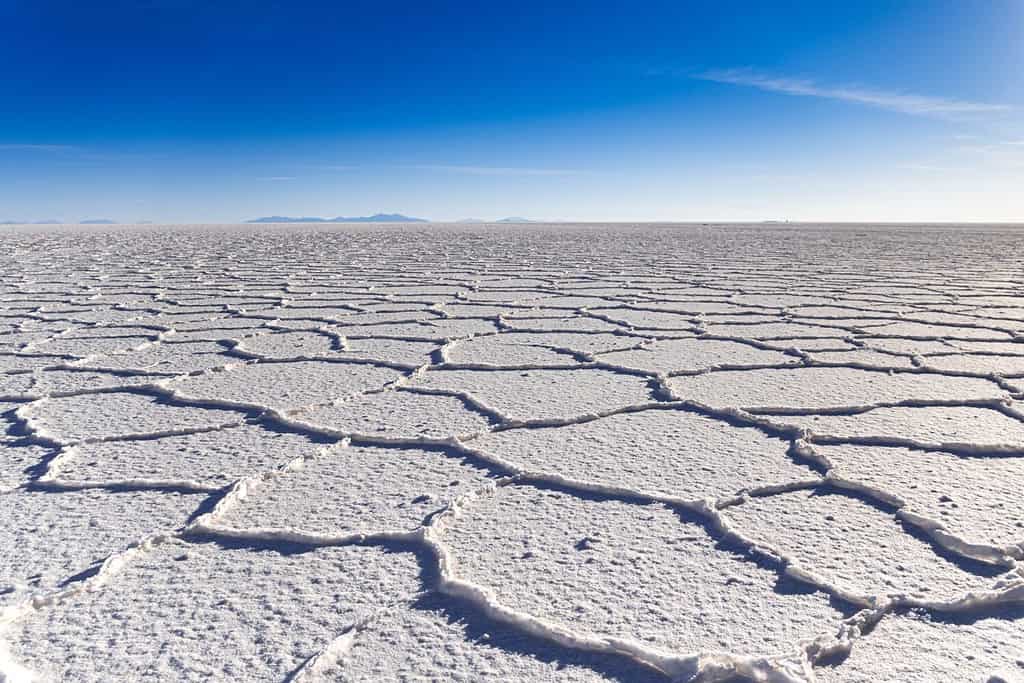
Salar de Uyuni is the world’s largest salt flat.
©Marco A. Huanca/Shutterstock.com
What Makes it Special: The Uyuni Salt Flats, the world’s largest salt flat, are located in southwest Bolivia. It’s a vast, blindingly white desert of salt. During the rainy season, the seemingly endless, mirror-like surface creates surreal reflections. The nearby train graveyard adds a post-apocalyptic charm.
Why Do People Want to Go There: The Uyuni Salt Flats are a photographer’s dream, offering the chance to capture mind-bending optical illusions and stunning reflections. It’s also a unique landscape unlike anywhere else on Earth.
What Can People Do While There: Take mesmerizing perspective photos, explore the train graveyard, and stargaze in the pristine night sky.
The Culture of the Region: The nearby town of Uyuni reflects a mix of indigenous and colonial influences. Visitors can sample traditional Bolivian cuisine and visit local markets.
What Can People See: The world’s largest salt flat, cacti-covered islands, the famous Dakar Rally route, and a mesmerizing starry night sky.
Safety Rating: Safe for tourists, but extreme weather conditions can occur. Respect the fragile ecosystem and follow local guides’ advice.
How to Get There: Fly into Uyuni, Bolivia, and arrange tours through local operators for a unique salt flat experience.
Now, let’s head to the surreal landscapes of Tepui Roraima.
7. Tepui Roraima, Venezuela

Tepui Roraima in Venezuela is a haven for unique flora and fauna.
©anjahennern/Shutterstock.com
What Makes it Special: Tepui Roraima, the inspiration for Sir Arthur Conan Doyle’s “The Lost World,” is a massive flat-topped mountain in Venezuela’s Gran Sabana region. Its otherworldly landscapes, unique flora and fauna, and sheer isolation make it an adventurer’s dream.
Why Do People Want to Go There: Adventurers and explorers are captivated by the untouched, prehistoric landscapes of Tepui Roraima. It’s a place to embark on epic treks and discover hidden wonders.
What Can People Do While There: Trek to the summit of Tepui Roraima, explore the unique flora, and witness breathtaking waterfalls cascading from the cliffs.
The Culture of the Region: Indigenous Pemon communities inhabit the area, and their culture is deeply intertwined with the land. Visitors can learn about their traditions and rituals.
What Can People See: The massive flat-topped mountain, unique plant species, waterfalls, and perhaps even rare species like the endemic Roraima bush toad.
Safety Rating: Best explored with experienced guides due to challenging terrain. Check local conditions, as weather can be unpredictable.
How to Get There: Fly to Ciudad Bolivar or Santa Elena de Uairen in Venezuela. Arrange guided treks to Tepui Roraima with local operators.
Next, let’s journey into the driest remote spot on Earth.
8. The Atacama Desert, Chile
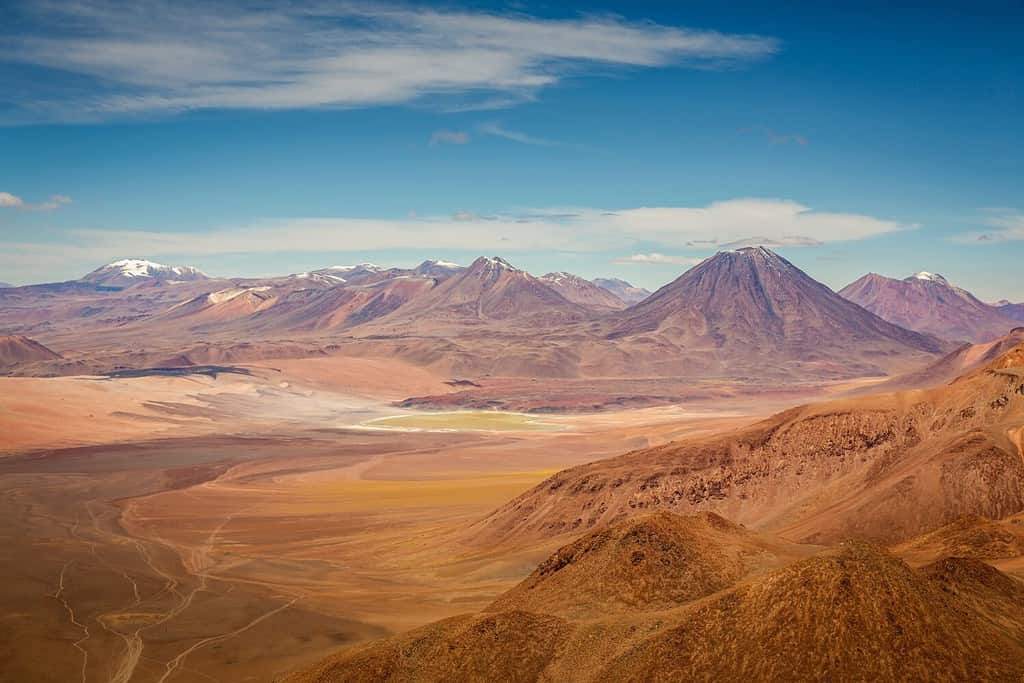
The Atacama Desert in northern Chile is the driest desert in the world.
©PositiveTravelArt/Shutterstock.com
What Makes it Special: The Atacama Desert, located in northern Chile, is the driest desert globally. Its stark, moon-like landscape boasts salt flats, geysers, and colorful canyons. It’s also one of the best places on Earth for stargazing, thanks to its unique terrain, clear skies, and lack of light pollution.
Why Do People Want to Go There: Astronomy enthusiasts and nature lovers are drawn to the Atacama Desert for its unique landscapes and unparalleled stargazing opportunities.
What Can People Do While There: Stargaze at world-class observatories, explore surreal landscapes, visit geothermal geysers, and take in the stunning scenery.
The Culture of the Region: Indigenous cultures, such as the Atacameños, have a rich history in the region. Visitors can learn about their traditions and artwork.
What Can People See: Vast salt flats, striking desert landscapes, geothermal geysers, and some of the clearest night skies in the world.
Safety Rating: Generally safe for tourists, but extreme temperatures and high altitudes can pose challenges. Prepare accordingly and stay hydrated.
How to Get There: Fly to Calama, Chile, and explore the Atacama Desert with local tour operators.
Our final destination takes us to the rugged beauty of Fitz Roy.
9. Fitz Roy, Argentina
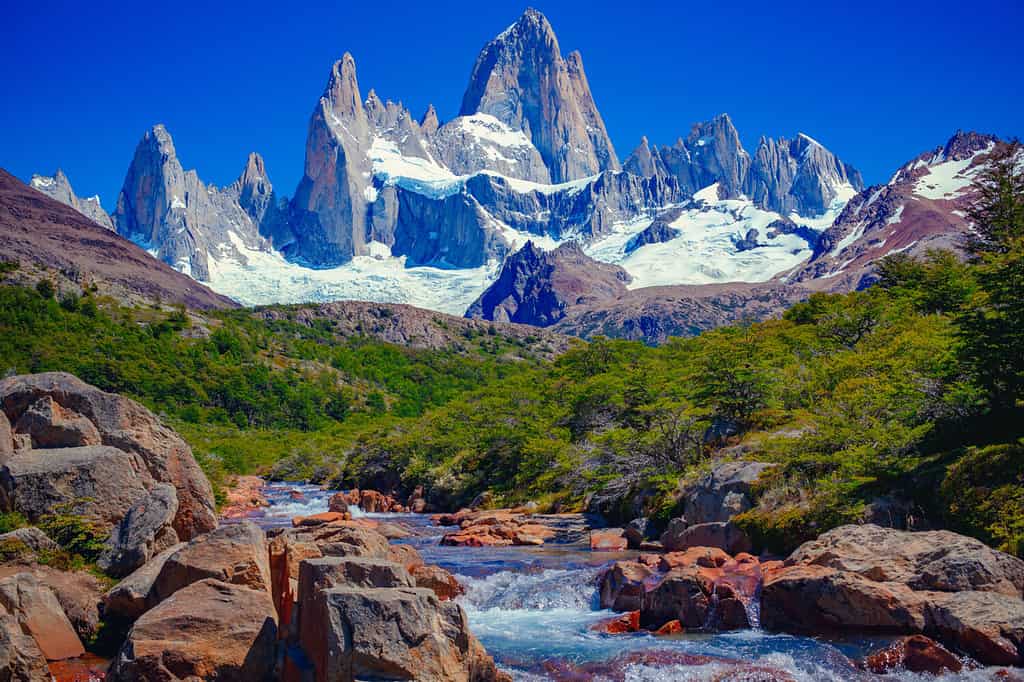
Fitz Roy, also known as Cerro Fitz Roy or Mount Fitz Roy, is a striking granite peak located in Patagonia, Argentina.
©Samuel Ericksen/Shutterstock.com
What Makes it Special: Fitz Roy, also known as Cerro Fitz Roy or Mount Fitz Roy, is a striking granite peak located in Patagonia, Argentina. It’s a challenging destination for mountaineers and hikers, offering rugged beauty, challenging climbing routes, and proximity to the Southern Patagonian Ice Field.
Why Do People Want to Go There: Fitz Roy is a magnet for adventure seekers and mountaineers who aspire to conquer its challenging peaks and witness its breathtaking vistas.
What Can People Do While There: Hike challenging trails, attempt technical climbing routes, and immerse yourself in the pristine wilderness of Patagonia.
The Culture of the Region: Patagonia has a rich history of explorers and adventurers. Visitors can learn about the region’s history and engage with the local culture.
What Can People See: Fitz Roy’s towering granite spires, turquoise glacial lakes, and the stunning Southern Patagonian Ice Field.
Safety Rating: Safe for experienced climbers and hikers. Prepare for rapidly changing weather conditions and take proper safety measures.
How to Get There: Fly to El Calafate or El Chaltén in Argentina and embark on hiking and climbing expeditions with local guides.
South America’s most remote locations offer a unique blend of adventure, natural beauty, and cultural richness. While they provide unparalleled opportunities for exploration and discovery, it’s essential to prioritize safety when venturing into these remote regions.
Always plan your trips with reputable tour operators, take necessary precautions, and respect the environment and local cultures. By doing so, you’ll be able to unlock the hidden treasures of South America’s most remote destinations and create unforgettable memories that will last a lifetime.
The photo featured at the top of this post is © gustavofrazao/iStock / Getty Images Plus via Getty Images
Thank you for reading! Have some feedback for us? Contact the AZ Animals editorial team.






